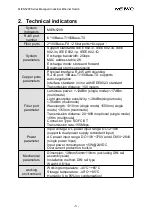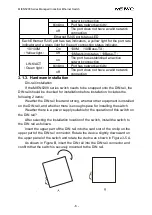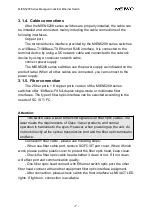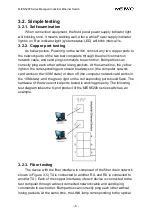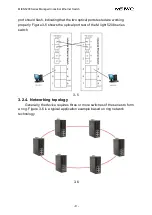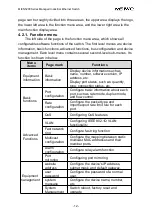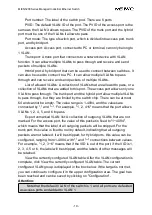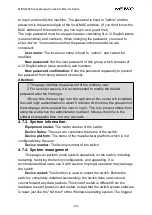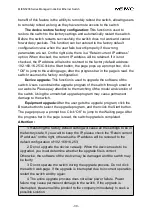
MIEN5208 Series Managed Industrial Ethernet Switch
- 17 -
4.The port speed limit requires high quality of the network cable,
otherwise a large number of conflict packets and broken packets will
appear.
4.6. Advanced function
Advanced function include: Qos, VLAN, fast ring, multicast configuration,
alarm configuration, and port mirroring.
4.6.1. QoS
QoS
(
Quality of Service
)
QoS
(
Quality of Service
)
is quality function, that
will realize by switch chip’ 4 interior priority line.Packets in the high priority
queue are held in the switch for a short period of time, with some
latency-sensitive traffic supporting a lower latency, and packets in a
lower-priority queue being the opposite.According to the port ID, MAC address,
802.1P priority label, DiffServ and IP TOS, Wuhan management network series
switches can classify packets to a corresponding level.The QoS full line rate
operation mechanism, the actual scheduling is performed based on the
advantageous mode rotation or the high priority queue mixing mode.Deal with
different priority data packet, each port most 4 queues.
When QoS forbidden , all choices are forbidden, if you want to setting QoS
must first choose start, as below :
Then you choose absolute priority. relative priority when you choose absolute
priority, Ethernet switch will first deal with high priority queue data packet , then
deal with low priority data packet, four queues transmit percentage from high to
low are 8
:
4
:
2:1.As below picture:
There are two priority types: port priority and 802.1P priority. Several types
can be arbitrarily enabled. When both types are enabled at the same time, the
802.1P priority function takes precedence over the port priority function.
The principle of port-based priority is: When a port is enabled with a port
priority, packets received by that port will enter the corresponding priority
queue. For example, if the priority of a port configuration is “fastest queue”, all
packets entering from this port will enter the highest priority queue of the switch.
The data of this port will have a greater probability than other ports. Forward
(relative priority mode), or only the data of the port is sent, and then send data
of other ports (absolute priority mode).
802.1P is an extension protocol of the IEEE 802.1Q (VLAN Labeling

